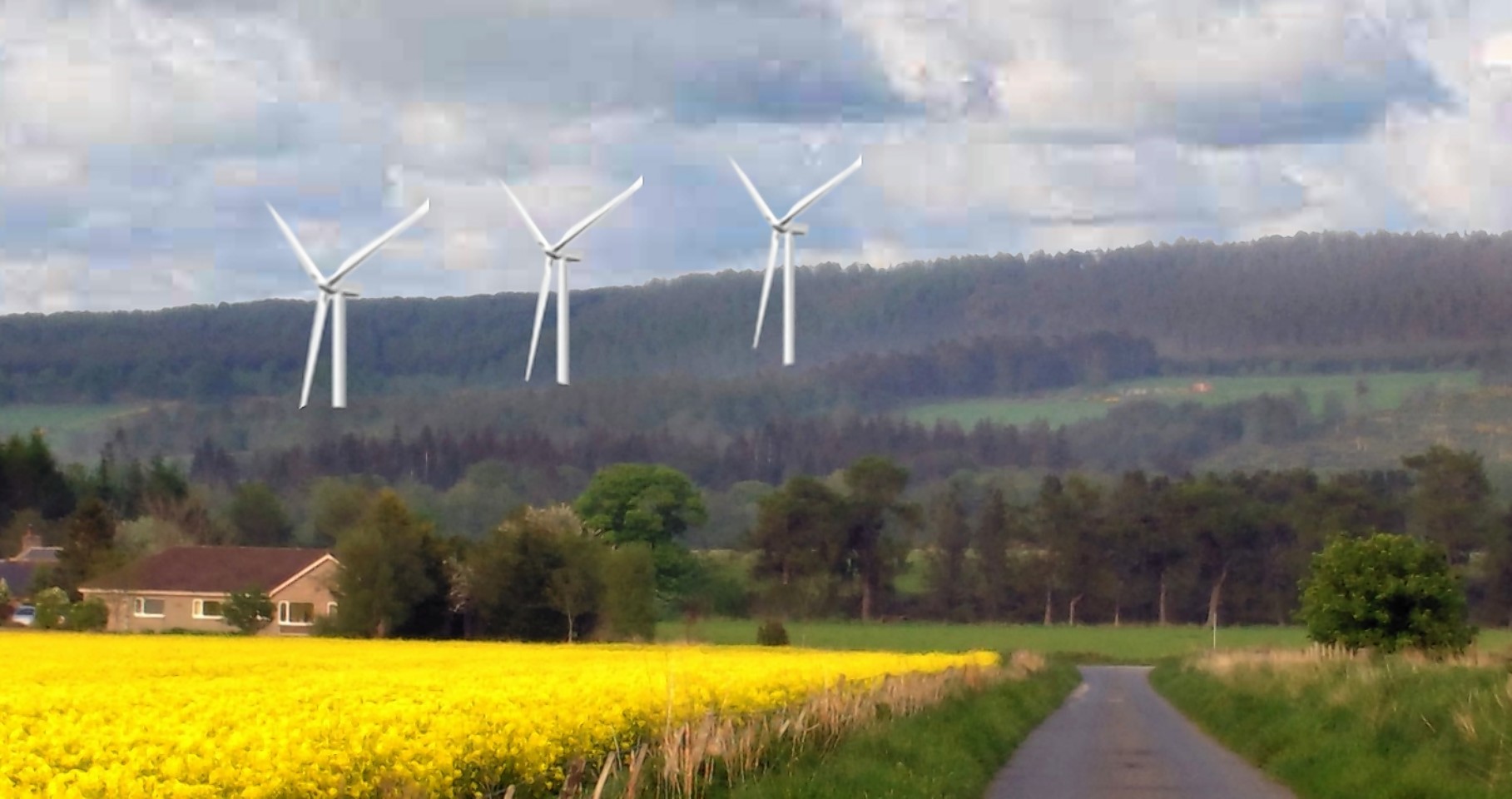A new map shows the full extent of the “industrialisation” of the north-east by the windfarm industry.
Campaigners said it highlights there is practically no escaping the intrusion of windfarms and single turbines on the landscape.
They are now calling for changes to the planning rules and for greater clarity from the Scottish Government over how wild areas and scenic areas are protected.
The renewable energy industry dismissed the map as a “gross oversimplification” that “makes a mockery” of planning assessments.
Produced for the John Muir Trust, it displays “zones of theoretical visual impact” of existing windfarms if there were no trees of buildings in the way.
Huge swathes of Aberdeenshire and Moray and practically all of Banff and Buchan are effected.
The map has re-ignited the battle over how many windfarms and turbines should be allowed.
Derek Ross, of the Save Brown Muir campaign, said: “ It is absolutely ridiculous. There will be nowhere in Moray that you cannot see a wind turbine from.
Mr Ross, of Glen Rothes, said turbines in Moray are visible from the top of Cairngorm and there used to be a beautiful view of Lochnagar from the vitrified fort on Tap O’ North, but “now there are three huge wind turbines in the way”.
He added: “It is so sad there are doing this to our countryside. It is so shortsighted because in 20 years time no one will want to know them because they will be a redundant technology. They are industrialising our landscape.”
Nick Orpwood, of Concerned About Wind Turbines in Aberdeenshire, said whichever way he looks from his house at Middle Cairncake, two miles east of Cuminestown, there are turbines and that was common for the whole area.
He believes a major problem is that the planning rules stipulate only people living 66 metres (72yds) of a proposed turbine have to be notified.
“If someone is going to put up something like a turbine then they need to actually ensure than anyone in a three mile radius is advised it is in the planning system so they have the opportunity to make their voice heard,” Mr Orpwood said.
John Low, John Muir Trust policy officer said the Scottish Government must clarify regulations for wild land that it will be protected unless there are mitigating factors.
Even if wild land is protected windfarms outside of designated areas can have a huge impact, he said.
Mr Low is concerned at the cumulative affect of number of wind farms and of turbines already constructed and those in the pipeline.
“If they all go ahead there will be over 900 turbines ringing the Cairngorm National Park and once decommissioned the bases get grassed over leaving a couple of million tonnes of reinforced concrete beneath the surface as a gift to future generations,” he said.
Joss Blamire, senior policy manager at with the industry body Scottish Renewables, said: “Wind farms go through a rigorous planning process to ensure that they are visually acceptable.
“This map is a gross oversimplification and makes a mockery of technical planning assessments carried out by professional landscape architects. It even fails, on a basic level, to take into account the presence of objects such as trees or buildings.”
